4.2.5 Apollo 10 Images – Day 5: May 22nd
A couple of hours after AS10-
Over the first 24 hours the crew completed a variety of system checks in the LM, before finally undocking the LM from the CSM and the two craft began orbiting separately. The LM ascent and descent stages were separated just as they would be in a landing mission. A serious problem occurred during this latter separation after a switch was placed in an incorrect position. This caused a considerable amount of what NASA describe as 'anomalous motion' that put the mission at great risk of failure.
During this initial period, no photographs of Earth were taken – mostly because the crew were somewhat pre-
However while Stafford and Cernan were in the LM they did observe Earthrise and had many attempts at getting photographs of it. While they wanted colour, the first image was actually taken using black and white film, and we’ll look at the logical deductions that allow us to conclude that now.
Figure 4.2.5.1 shows AS10-
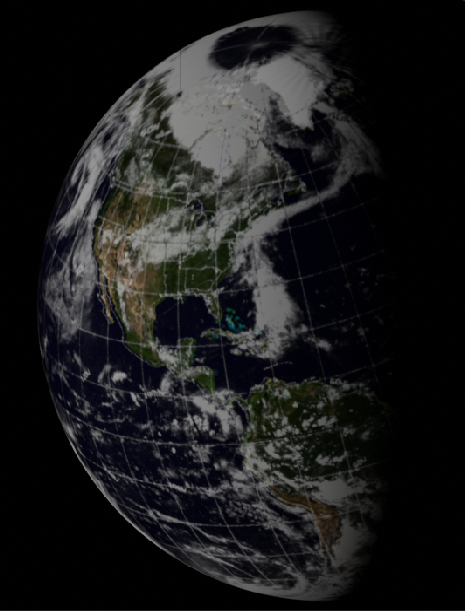
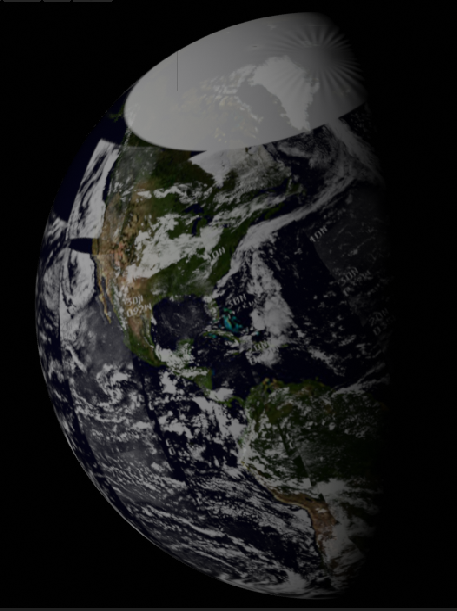

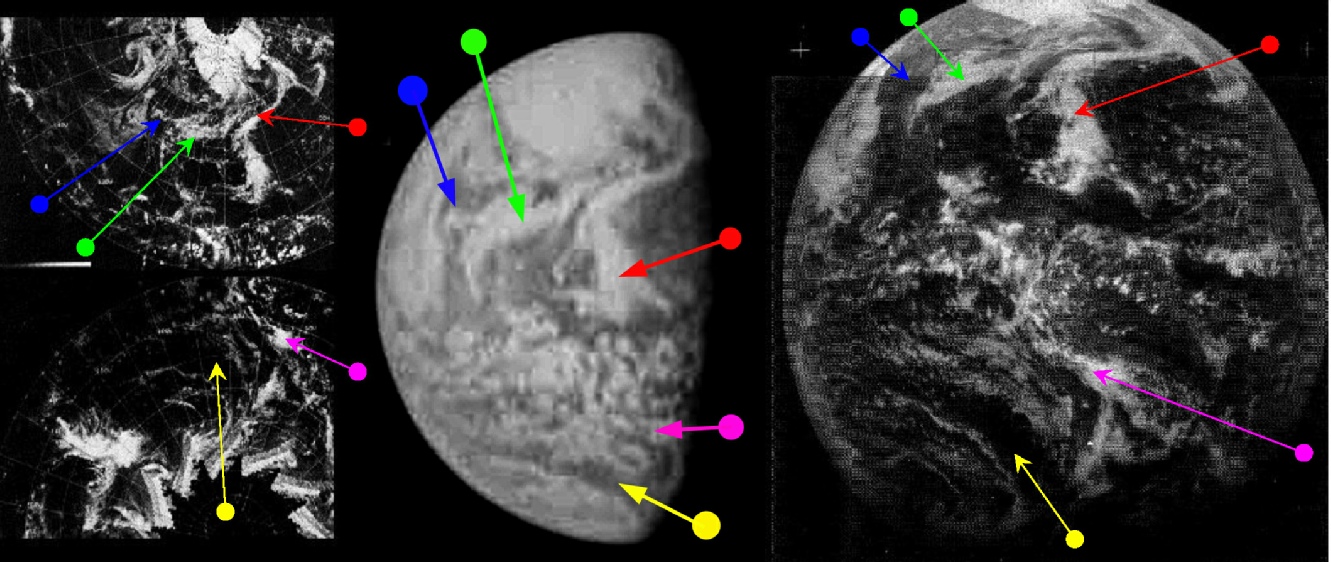
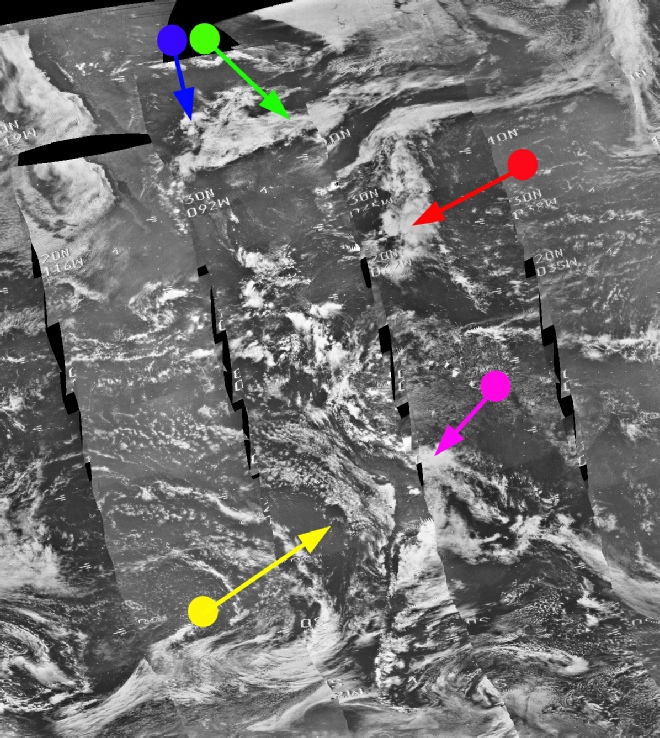
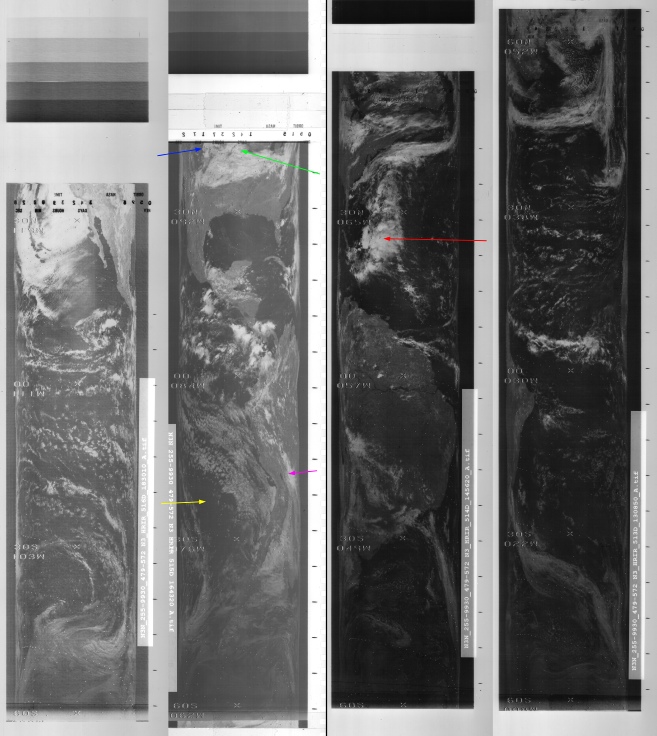
Figure 4.2.5.2: Main image -
So, how can we tell that this is Apollo 10’s first Earthrise?
There is some information in the photographic index of the mission, but this does not give any information other than the features taken in these magazines. These features are usually known lunar craters that were planned to be photographed, or they were “T.O.” -
There are some clues in the mission transcript, but there is nothing absolutely specific. So, having drawn some arrows on some fairly vague pictures, what other evidence is there to support them being in the right place?
First of all, let's examine figure 4.2.46a. The photographic index (available here: AFJ) records that magazine 29 (originally designated 'P'):
“...contains photographs taken from the LM during the descent approach to landing site 2 (just missing the site)”.
So, any photographs on the magazine were taken from the LM. The crew were only in the LM between 15:51 on the 22nd and 03:31 on the 23rd. Several hours after entering and before leaving the LM, however, the crew would have been busy navigating away from and back to the CSM, so this gives a much narrower window on the 22nd for photography purposes. We know that they were frustrated by the lack of colour film on an earlier orbit thanks to this exchange:
099:09:50 Cernan (in Snoopy): Oh, Tom, get a picture of that -
099:09:52 Stafford (in Snoopy): I don't have any color!
099:09:54 Cernan (in Snoopy): There's the world.
099:09:57 Stafford (in Snoopy): We don't have any color.
099:10:00 Cernan (in Snoopy): John, we just saw the world and is it fantastic!
Given the timing of that statement it’s likely that they have caught a mid-
The closest approach to the lunar surface is recorded as being at 21:29 (100:27:46 MET) on the 22nd, on orbit 13, and around that time in the mission transcript we have this remark from the LM crew:
100:25:52 Cernan (in Snoopy): John, we just had Earthrise. Fantastic. Golly, John! Tom, get that if you can.
However shortly afterwards we have Stafford complaining bitterly that he is unable to get the colour magazines to work properly:
100:25:58 Stafford (in Snoopy): I don't have any color film on this son of a bitch.
Cernan then exclaims again:
100:27:46 Cernan (in Snoopy): Oh. Charlie. We just saw Earthrise and it's got to be magnificent.
We then have
100:28:09 Cernan (in Snoopy): The only trouble is -
'him' being Jack Schmitt, the geologist who finally made it to the Moon on Apollo 17. The statement reveals that they were actively engaged in photography then using black and white film.
The SkySafari image coincides well with the terminator line on the Apollo image and the associated weather patterns around it, particularly the shape of the terminator. As far as the satellite images are concerned, the NIMBUS image at the terminator line (orbit 514) was commenced at 14:56 on the 22nd. The ESSA track covering the terminator was track 2 on orbit 1066, which commenced at 16:06. The ATS-
While Cernan and Stafford were having their traumas with still photography, a 16mm camera did manage to capture an Earthrise. There is no record of precisely when magazine H was set up, but shortly after the start of Revolution 13 we have:
100:04:57 Stafford (in Snoopy): What are you taking, 6?
referring to 6 frames per second on the DAC. A quick look at the maps showing 16mm coverage shows that the start of Magazine H’s coverage was shortly after the far side meridian (the standard delimiter for the start of orbits). It’s this magazine’s footage that shows the Earth. Figure 4.2.5.3 shows a still from that sequence.
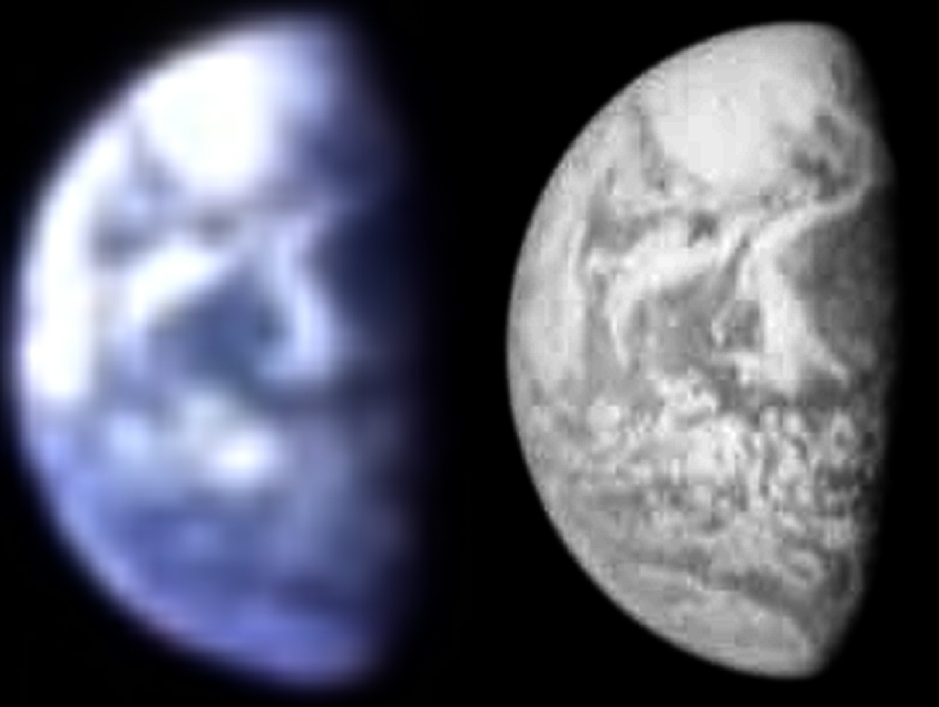
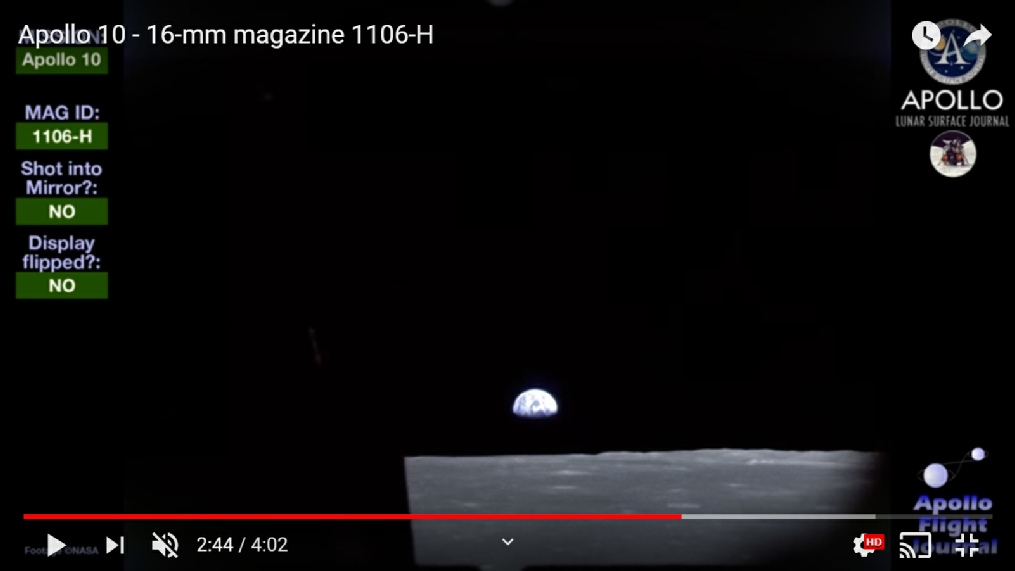
Figure 4.2.5.3: Still from magazine H showing Earthrise.
The image can’t have been taken any earlier, as while the shape of the cloud near the terminator is similar to that in the Atlantic the preceding day, the Earth was more at the three quarter stage than the half it is here. To be absolutely certain we’re looking at the same scene, here it is compared with the black and white image used earlier (figure 4.2.5.4).
Figure 4.2.5.4: Comparison of 16mm Earthrise still with AS10-
They are obviously showing the same scene, and Stafford was cursing his luck and their Hasselblads over catching Earthrise with the Hasselblads, Gene Cernan quietly, and probably without realising, managed to capture the historic footage. As they are the same scene, the reader is respectfully referred to the previous set of satellite images for the comparison.
The 16mm Earthrise capture was repeated a couple more times before they could get a colour still image. Magazine F was used on Revolution 14 to intermittently capture features of interest in the absence of a working Hasselblad. Figure 4.2.5.5 shows the still and its analysis.
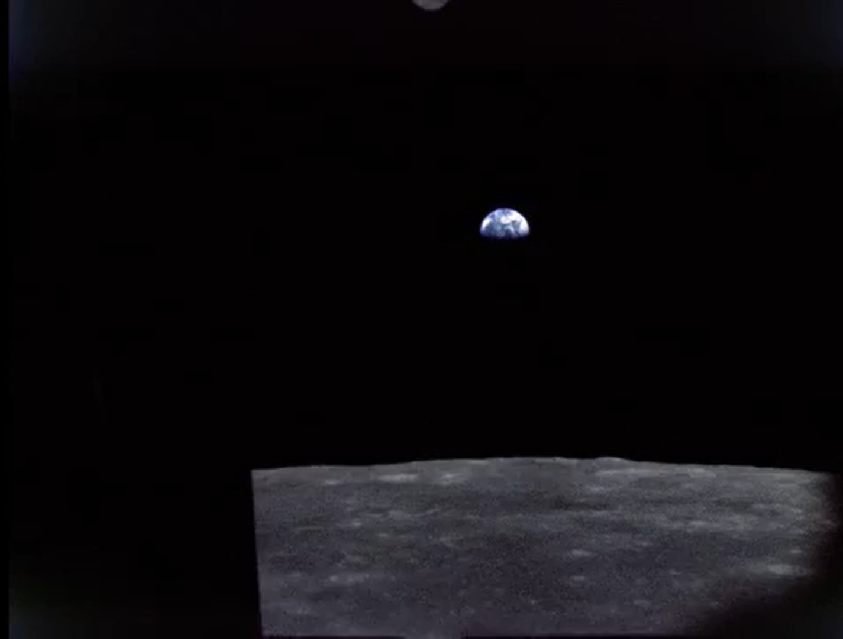
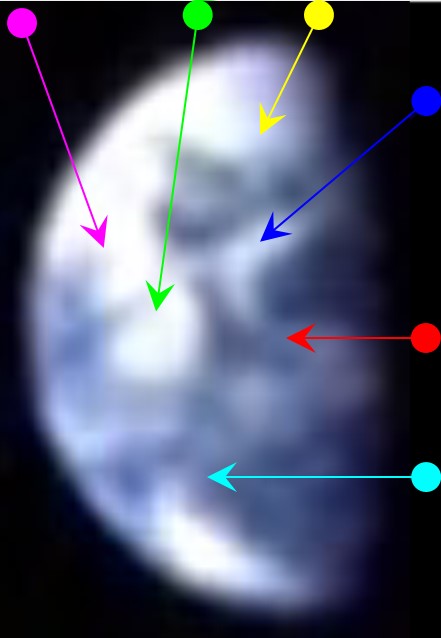
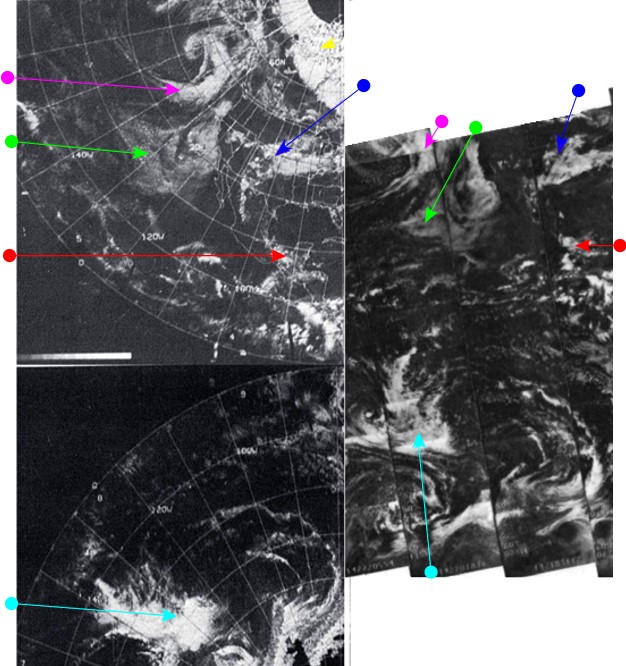
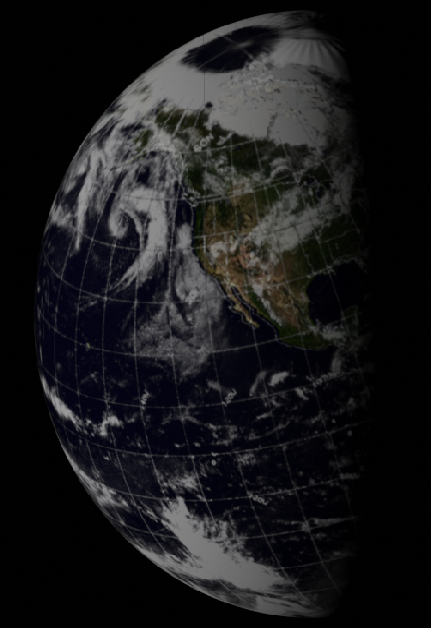

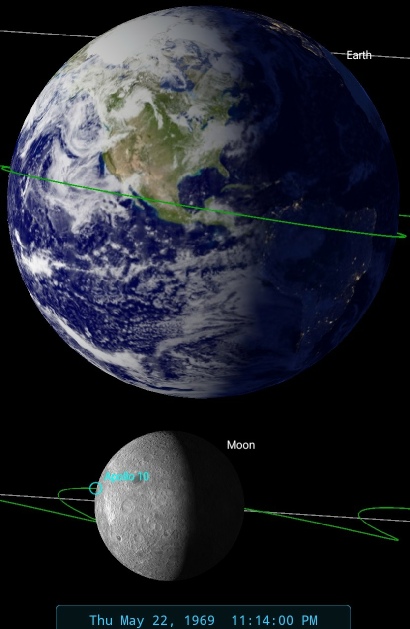
Figure 4.2.5.5: Apollo 10 16mm still (top left) zoomed and cropped (top right) and compared with ESSA (middle & bottom left) and NIMBUS (bottom right) images from 22/05/69. Below this are 3D reconstructions using digitally recovered ESSA (left) and NIMBUS (centre) data, and SkySafari time estimate.
As with the preceding example, it is possible to be very precise here. At roughly 23:00 on May 22nd, Apollo 10 was 90 minutes past its closest approach to the lunar surface and would, in another 30 minutes, experience the near catastrophic anomalous motion' that caused such alarm. The Apollo 10 mission report states that Apollo 10's craft (now separated & orbiting separately), would experience loss of signal (LOS) as it disappeared behind the Moon at 101 hours and 36 minutes into the mission, or 22:24 GMT.
Acquisition of signal (AOS) would be at 102 hours 22 minutes, or 23:14 GMT (NB: times given are for the CSM, the LM times are a few minutes later). As AOS can only occur when the Earth becomes visible to the orbiting craft, the Earthrise image was therefore taken sometime around 23:14, 22/05/69, exactly matching the crew’s exclamations:
102:25:24 Stafford (in Snoopy): Oh, look out there. Oh, if I only had a camera! Get it. Camera.
102:25:29 Cernan (in Snoopy): Oh, shoot.
Stellarium’s depiction of this time shows that the terminator should be crossing the east coast of northern USA at this time, and this is precisely what the screenshot shows.
The next Earthrise image occurs on day 6 -
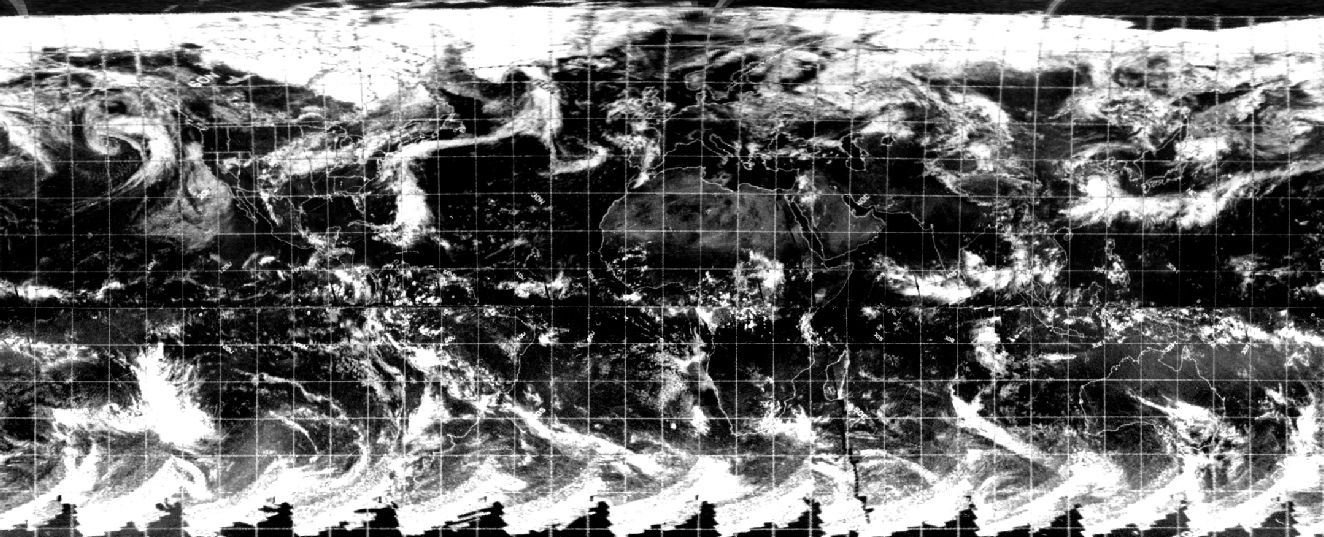
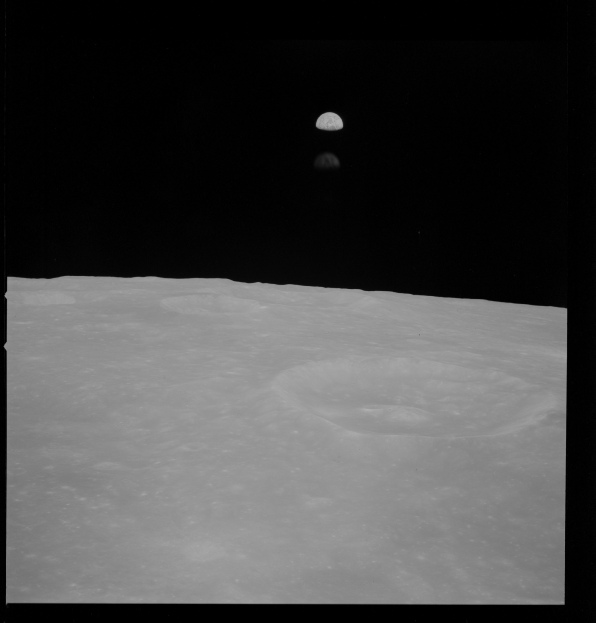
Figure 4.2.5.1: AS10-